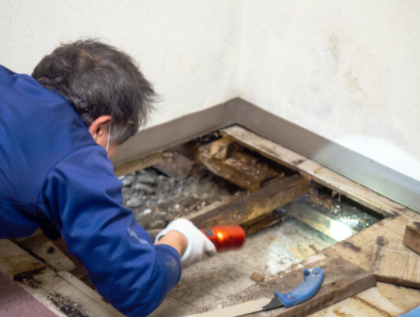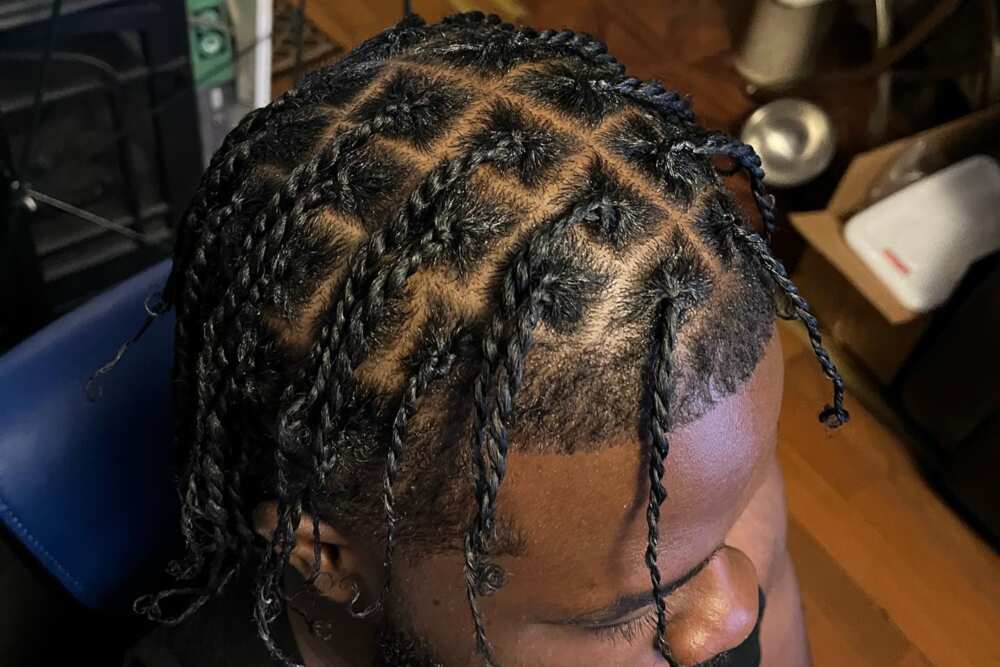(ThyBlackMan.com) Having mold in your home can create serious health issues, and whether you own your own or you’re a renter, it needs to be addressed.
It’s important to understand the harmful effects of mold exposure and how to spot mold so that you can remedy the problem or contact your landlord so they can do so.
Mold grows in places where there is a lot of moisture. For example, you may see mold growing somewhere there’s been flooding, or around windows, pipes, or roofs. Sometimes mold grows in ceiling tile and wood. It can also grow in insulation, upholstery, fabric, and carpet.
Any mold producing something called mycotoxins is toxic. Myco is a fungus. One of the most dangerous types of mold that may be in a home is technically known as Stachybotryschartarum, which is dense black mold. Such a problem should not be taken lightly.
How To Identify a Mold Problem
Some of the signs your home might have a mold problem include:
- You notice a weird smell in your chimney. Moisture can accumulate in your chimney, for example, when you have a rusty chimney cap and it lets rain and snow in, making it the perfect environment for mold.
- If you regularly feel like your eyes burn or are watery, or you have a lot of nasal congestion for seemingly no reason, it could be time to consider that you potentially have a mold issue. You might want to track your reactions over a couple of weeks to figure out if they’re triggered more when you’re in certain rooms of your home or particular areas.
- Sometimes mold exposure can cause your skin to feel tingly, itchy, or you might have burning sensations. This is especially true if you’re allergic to mycotoxins, which your body may react to with the release of histamines.
- Do you notice the paint bubbling on your walls, particularly in your bathroom or near a window? Moisture is the most frequent reason paint bubbles and moisture allow mold to thrive. You can’t just cover it up with fresh paint and hope it goes away. You will need to figure out the source of the moisture and fix that, and then you can repaint.
- Do you have a lingering or chronic cough that you can’t seem to shake? You should first speak to an allergist and see if you’re positive for mold. Then, if that’s the case, you should speak to your landlord, or if you’re a homeowner, hire someone who specializes in mold eradication.
- If you don’t have a bathroom exhaust fan or it’s not working well, consider a mold test. Bathroom exhaust fans are a primary way to keep mold away in a moist environment.
- Does your house smell musty? Again, this can be a sign of mold in your home.
If you want to prevent mold, there are certain steps you can take. For example, keep your home’s humidity levels low—an air conditioner or dehumidifier can help.
Ensure there is plenty of ventilation in your home and especially your kitchen or bathroom.
How Is Mold Testing Performed?
If you notice signs of mold either in your own health or perhaps just by odors or visual signs, you should have a mold test done.
A mold inspector will come and take a sample of a surface for the air. The inspector can then figure out not just if there is mold, but what kind it is.
If you can see a small area of mold growth in your home, you may be able to clean it on your own, but the CDC recommends if you do that you wear an N-95 respirator, as well as protective eyewear and gloves.
You can scrub mold off with a beach solution.
If you have visible mold in an area larger than 3 feet by 3 feet, you should call a professional removal company.
Make sure to wear medical-grade nitrile gloves for proper hand protection. The same goes for your protective eyewear; use one of those snug medical goggles to ensure no spores get into your eyes.
How Can Mold Affect Your Health?
Respiratory symptoms are frequently linked to mold exposure, and they may be more severe symptoms if you have a mold allergy.
If you have any allergies in general, you may also be more sensitive to mold. Some of the symptoms of a mold allergy or allergies made worse by mold include:
- A runny or stuffy nose
- Red, watery eyes
- Dry cough
- Sore throat
- Skin rashes
- Sinusitis
- Wheezing
If you have a severe mold allergy, you may have symptoms like shortness of breath.
Some symptoms of mold poisoning can include:
- Body aches
- Mood changes
- Memory loss
- Nosebleeds
- Headaches
If you have asthma, certain types of mold can trigger an attack, and if you have chronic respiratory disease, you might have breathing problems when exposed to mold.
If you have a weak or suppressed immune system, you may be at risk for a lung or skin infection.
Mold can especially impact the health of children.
There was a study in 2016 that found high levels of mold in homes was linked to asthma in school-age kids.
If you believe you are experiencing health effects related to mold, then you can visit your doctor, who may refer you to an allergy specialist.
There are tests that can be done.
One is a blood test. Your doctor will take a blood sample and send to a lab that measures antibodies that can show how sensitive your immune system is to different types of mold.
A skin prick test is another option, where your doctor takes mold and applies it to your skin with a needle. You will experience a reaction such as a breakout or hives if you’re allergic to the mold you’re exposed to.
If you have symptoms related to mold exposure, different treatment options are available.
For example, nasal sprays like nasal corticosteroids can reduce inflammation in the airways caused by mold.
Some OTC allergy medicines like Claritin may help.
Your doctor might also advise you to get allergy shots, which help your body develop immunity to allergens over time.
If you believe you’re experiencing health effects of mold, first try to identify where your exposure is coming from and then speak to your health care provider.
Staff Writer; Brian Short




















Leave a Reply